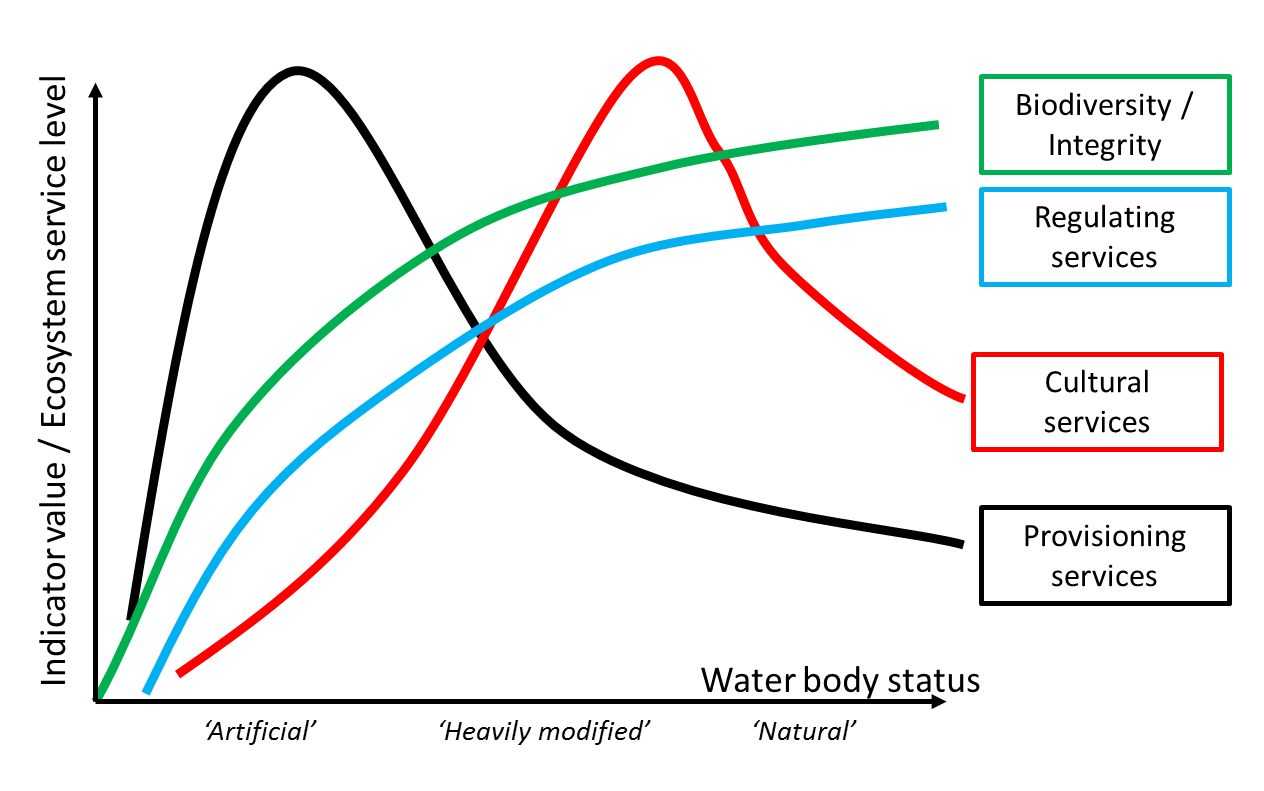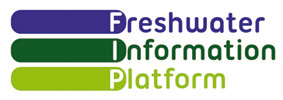What are impacts?
Changes in the physical, chemical or biological state of the environment determine the quality of ecosystems and the welfare of human beings. In other words, changes in the state may have environmental or economic ‘impacts’ on the functioning of ecosystems, their life supporting abilities, and ultimately on human health and on the economic and social performance of society.
Stress or Impact = pressure * sensitivity
There is no single answer to the question ‘is there impact?’. Information on drivers and pressures alone do not suffice to answer this. Of course there are straightforward cases of impact, such as barriers in river mouths that completely block the upstream migration of anadromous fish species. However, figuring out whether and how pressures impact aquatic ecosystems is more often a complicated puzzle.
Hence, drivers exert pressures on aquatic ecosystems, which cause changes in their abiotic and biotic state, but that does not necessarily mean that these pressures actually do have an impact (Figure 1). This depends on the type and magnitude of the pressure(s) and on the sensitivity of the ecosystem. For example, lake ecosystems tend to be more sensitive to eutrophication than river ecosystems as a result of nutrient load, residence time and algae population dynamics. Rivers with elevated nutrient concentrations may still have a high water transparency with abundant aquatic vegetation, while the receiving lake downstream could become turbid from algal blooms.
Impact or stress can thus be characterised by a combination of pressure(s) and sensitivity, which can be expressed for different ecosystem attributes by threshold values for single or multiple pressures.
Alternative stable states
An approach to show significant impacts on ecosystems is the theory of alternative stable states. The concept describes how ecosystems may shift to a completely other – and often undesired – stable state with reduced ecosystem functioning or services. In alternative stable states, there is often resistance (so-called hysteresis) to a return to the desired state (Beisner et al 2003; Scheffer et al 1993).

Fig.2: Hypothetical linkage between biodiversity, ecosystem integrity and the various direct ecosystem services and the naturalness of water bodies (modified after Kandziora et al. 2013)
Impact on biodiversity and ecosystem services
Impacts on ecosystems can be quantified by the change or loss in biodiversity or in ecosystem services (Kandziora et al. 2013). A key message from a theoretical study by Kandziora and colleagues is that the impact on biodiversity and services do not follow the same trajectory. So many rivers have been regulated to optimise the level of provisioning services (reservoirs for freshwater supply or power generation, navigability, land reclamation for agriculture), which likely resulted in a simultaneous loss in biodiversity and ecological integrity, but likewise in regulating (water retention and purification) and cultural services
One of the most striking examples of impact illustrating that the gain and loss in biodiversity and ecosystem services may have opposite directions has been the introduction of Nile Perch in Lake Victoria (Lowe et al. 2000). It resulted in boom in commercial fisheries (increased provisioning services), a shift in cultural services and a tremendous loss in the endemic haplochromine fish community (Goldschmidt et al. 1993).
Further reading
Reports and publications:
Beisner, B.E., D.T. Haydon, & K. Cuddington, (2003). Alternative stable states in ecology. Frontiers in Ecology and the Environment, 1: 376-382. http://dx.doi.org/10.1890/1540-9295(2003)001[0376:ASSIE]2.0.CO;2
Goldschmidt, T., Witte, F., & Wanink, J. (1993). Cascading effects of the introduced Nile perch on the detritivorous/phytoplanktivorous species in the sublittoral areas of Lake Victoria. Conservation Biology, 7(3), 686-700. http://dx.doi.org/10.1046/j.1523-1739.1993.07030686.x/full
Kandziora, M., Burkhard, B., & Müller, F. (2013). Interactions of ecosystem properties, ecosystem integrity and ecosystem service indicators—A theoretical matrix exercise. Ecological Indicators, 28, 54-78. http://dx.doi.org/10.1016/j.ecolind.2012.09.006
Lowe, S., Browne, M., Boudjelas, S., & De Poorter, M. (2000). 100 of the world's worst invasive alien species: a selection from the global invasive species database (Vol. 12). Auckland: Invasive Species Specialist Group.
Scheffer, M. , S.H. Hosper, M.L. Meijer , B. Moss & E. Jeppesen, 1993. Alternative equilibria in shallow lakes. Trends in Ecology & Evolution 8: 275–79. https://doi.org/10.1016/0169-5347(93)90254-M
Selected Freshwater Blogs:
Freshwater Blog (2017) Untangling multiple pressure impacts in Swedish boreal streams. (External website)
Freshwater Blog (2015) CROSSFISH: human impacts on fish assemblages in European and North American rivers. (External website)
Freshwater Blog (2013) Special Feature: Freshwater Biodiversity and Ecosystem Services. (External website)
Freshwater Blog (2012) The effect of dams on fish biodiversity: A global view. (External website)
Freshwater Blog (2010) Businesses could benefit from protecting biodiversity. (External website)




